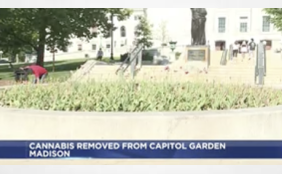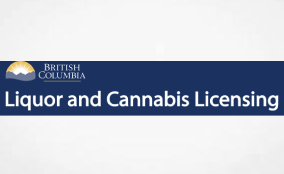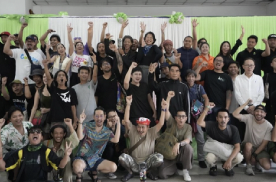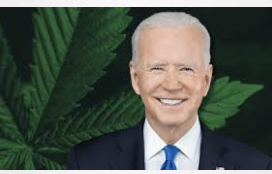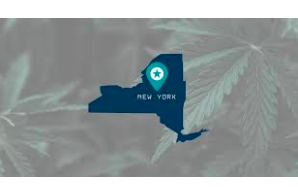Now that the Marijuana Regulation and Taxation Act (the MRTA) is (just about) law, the most frequent question (really, the only) we get at the Canna Law Blog is: what do I need to do to get a license? The answer is in the hands of the Cannabis Control Board (the CCB), a newly established governing body that will oversee the equally new Office of Cannabis Management (the OCM). Since the CCB will be responsible for implementing and regulating New York’s cannabis industry, our series on the specific components of the MRTA begins with a deep dive into the CCB and its powers and responsibilities.
What is the CCB?
The CCB is the government body tasked with creating and regulating New York’s cannabis industry. The CCB will consist of 5 board members, 3 appointed by the Governor and 2 appointed by the Senate and Assembly (1 each). The chairman of the CCB will be nominated by the Governor with the advice and consent of the Senate. CCB members will be appointed for a term of three years and must be citizens and residents of New York.
A key point: the composition of the CCB will be geographically and demographically representative of the State and the communities historically affected by criminal prosecution of marijuana offenses, with its principal office in Albany and branch offices in New York City and Buffalo (to start). It is clear that the CCB will be focused on the impact of the cannabis industry from a statewide perspective, and not just New York City.
What are the CCB’s responsibilities and powers?
Basically, the CCB is tasked with creating New York’s cannabis industry from scratch. Among its enumerated powers:
- Limiting (or not limiting) the number of registrations, licenses, and permits for each class to be issued within New York or in any political subdivision (i.e. municipalities) in New York. In plain English, the CCB will determine both the number of licenses issued and whether there will be any limits on licenses issued for any geographic area.
- Creating the standards and requirements for the following categories of licenses for medical cannabis, adult-use cannabis and cannabis products, and cannabinoid hemp and hemp extract:
- Cultivation;
- Processing;
- Packaging;
- Marketing and Sale; and
- For cannabinoid hemp and hemp extract, the ability to regulate excipients, and the type, forms, and concentration of products which may be manufactured and/or processed.
- Prescribing the form of applications for registrations (medical cannabis organization), licenses, and permits and any reports deemed necessary by the CCB.
- Issuing or refusing to issue any registration, license, or permit.
- Establishing the minimum criteria for certifying employees to work in the cannabis industry in positions requiring advanced training.
- Approving any price quotas or price controls set by the executive director of the OCM.
- Approving the OCM’s social equity plan.
- Reviewing the impact of licenses two years after the first retail sale to determine if any licensees have substantial market share that impairs social equity goals and to prevent dominant marketplace participation.
What do we know about the registration, licensing, and permitting process based on the CCB’s powers?
As of now, we do not know about the specifics beyond the types of licenses that will be issued. With that said, based on requirements for the social and economic equity program, the required composition of the CCB, and the CCB’s enumerated mandates, we can make an educated guess about the following:
- New York is serious about implementing a successful social and economic equity program. 50% of licenses will go to social and economic equity applications and the OCM and New York’s Urban Development Corporation will provide low-interest or zero-interest loans to qualified social and economic equity applicants. The CCB will also appoint a chief equity officer, who will be responsible for establishing public education programing dedicated to providing communities adversely impacted by cannabis prohibition with information about the licensing process and the resources the OCM can provide to social and economic equity applicants.
- Geographic variety will be a consideration in determining the number of and conditions for licenses. Between the requirement that the CCB’s membership be geographically representative and the express power to limit the number of licenses by region, it is apparent that the CCB will be encouraged to spread licenses around, literally.
- An applicant’s ability to demonstrate security and product tracking capabilities will be a significant component of evaluating applicants. The MRTA directs the CCB to implement rules and regulations designed to: (i) prevent the sale of adult-use cannabis to underage persons, including modification of tobacco vaping products for use with cannabis; (ii) prevent diversions of cannabis from New York into other states and vice versa; and (iii) prevent cannabis products that are legal under the MRTA from being used as cover for trafficking illegal drugs or other illegal activities.
When will the CCB begin creating and implementing the rules and regulations for New York Cannabis Industry?
So far, no specific time frame has been announced for appointing members to the CCB, the other advisory boards authorized by the MRTA, or filling positions within the OCM. Here is what we do know: the MRTA requires the CCB to issue an annual report on the effectiveness of the MRTA, with the first such report due by January 1, 2023. By definition, the deadline for the CCB’s first annual report implies that registrations, licenses, and permits will be issued early enough for sales to begin in 2022. Accordingly, it would be surprising if details on the registration, licensing, and permitting processes are not released this calendar year.
What is the OCM and how is it different from the CCB?
The OCM is effectively responsible for the administration of New York’s cannabis industry. For example, the OCM will be responsible for prescribing the actual application forms for licenses and permits and will submit completed applications (and recommendations) to the CCB for a final determination on the respective application.
Anything else you should know about the CCB?
The overarching point is that the CCB will be creating and regulating New York’s cannabis industry. As we all wait for details, the MRTA gives us a good sense of what the CCB will prioritize when creating and implementing a framework for the legal marijuana industry in New York.
Stay tuned to the Canna Law Blog for our next MRTA summary, coming live from our New York office. Please feel free to contact us with any questions.

